As I alluded to in the Fiji cycling post, in addition to being a generally excellent place to visit, there was another reason why the Fiji Islands became the last place added to my original route for the Tour, and a place that I was reluctant to pass up once travel became challenging. Of course, that reason was that Fiji possesses certainly the best list of resident birds to be found among the smaller island nations of the Pacific region. As an archipelago containing several islands that are both relatively large and spaced at adequate distances, in Fiji evolution has been able to perform admirably, leading to a great diversity of bird life, including a number of very spectacular examples. Included in the species list for the islands are thirty-one endemics, of which I eventually saw nineteen, though, quite frustratingly, only hearing a few more. Some of those misses were big disappointments, of course, but I was generally satisfied, since a handful of those unseen species are very rare, or restricted to minor, outlying islands that I didn’t visit.
I must say that some of the marketing statements by the Fiji tourism industry tend to exaggerate the ease at which the best species are normally seen, and I was not really surprised that greater efforts and patience were usually required. Fortunately, persistence paid off for the previously-mentioned Orange Dove, the mythical Bird Number One Thousand, and many of the rest were somewhat more accommodating, resulting in a satisfying tally for the country, one which also put me over my main goal for the Tour.
As with many countries, the very common, human-tolerant species got things started and Fiji Parrotfinch was a particularly fine example of that.
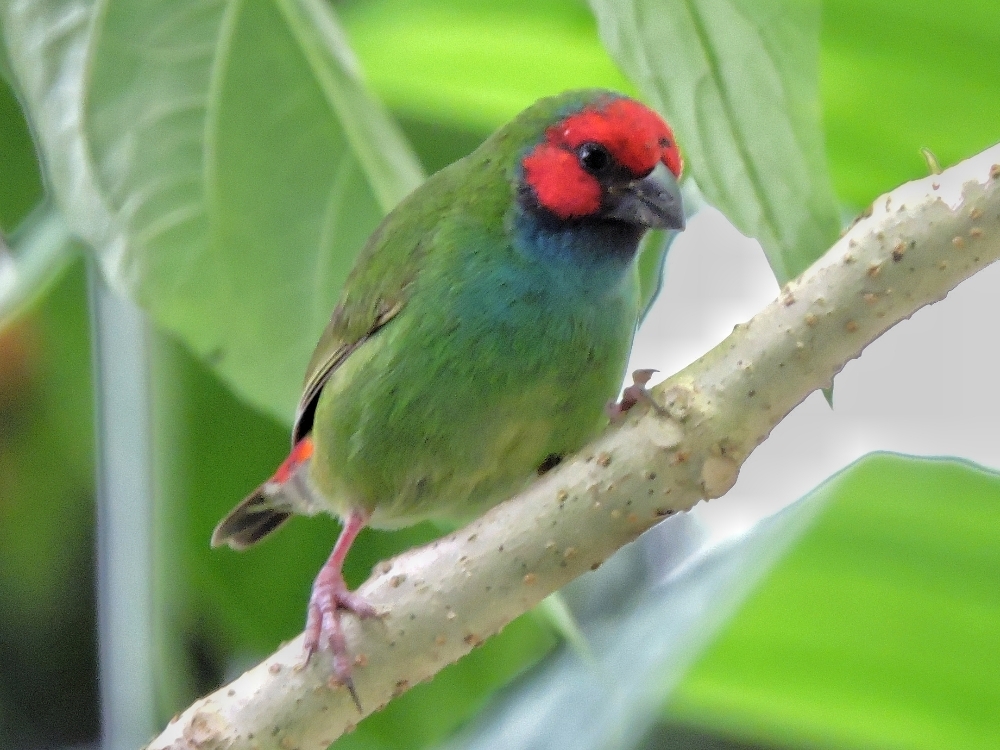
On the other hand, one big drawback for birding in the islands is that several introduced species have essentially overrun town, garden, and agricultural habitats, especially Common Myna and Red-Vented Bulbul, which were both abundant enough to be constantly distracting. Two others were somewhat less invasive, and also new for me, Jungle Myna, and Red Avadavat.
Fortunately, Polynesian Triller was a native bird that was also seen in many habitats, and the widespread Pacific Black Duck was a refreshing addition, since it had eluded me in Palau.
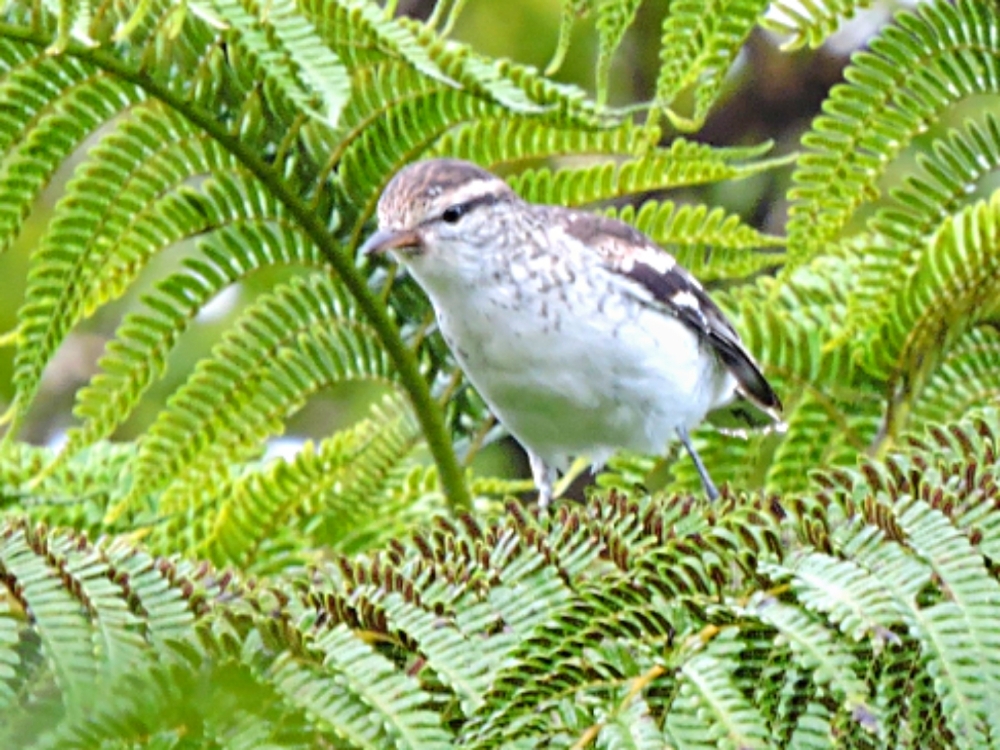
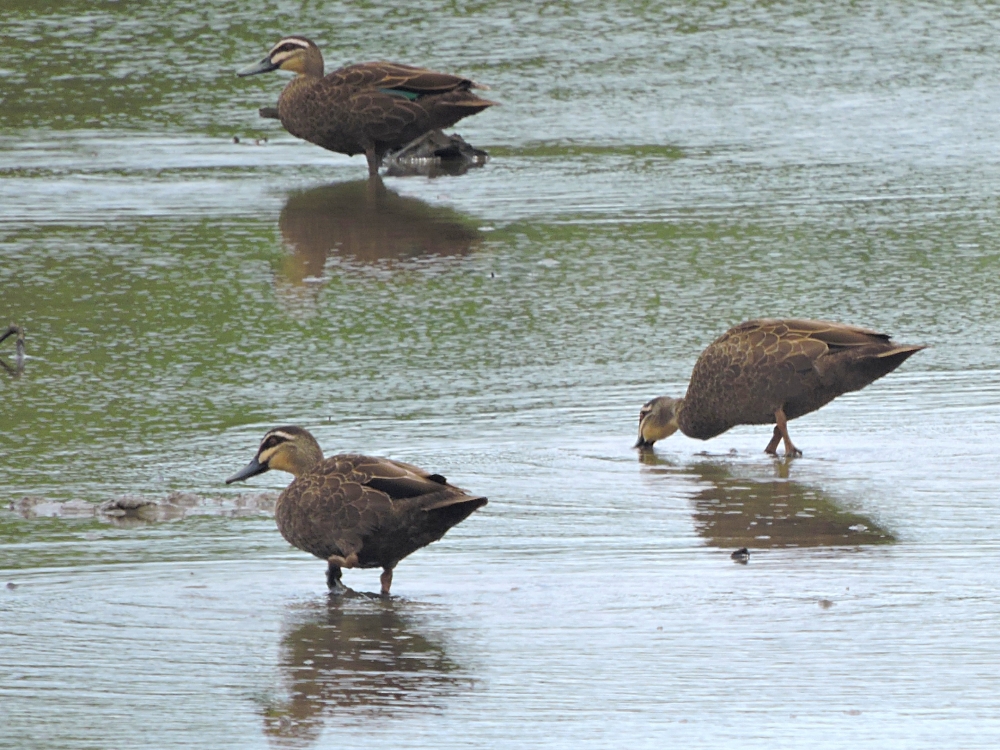
Some other species were seen relatively easily while cycling, Lesser Frigatebird, White-Rumped Swiftlet, Pacific Kingfisher, the common raptor of the islands, Fiji Goshawk…
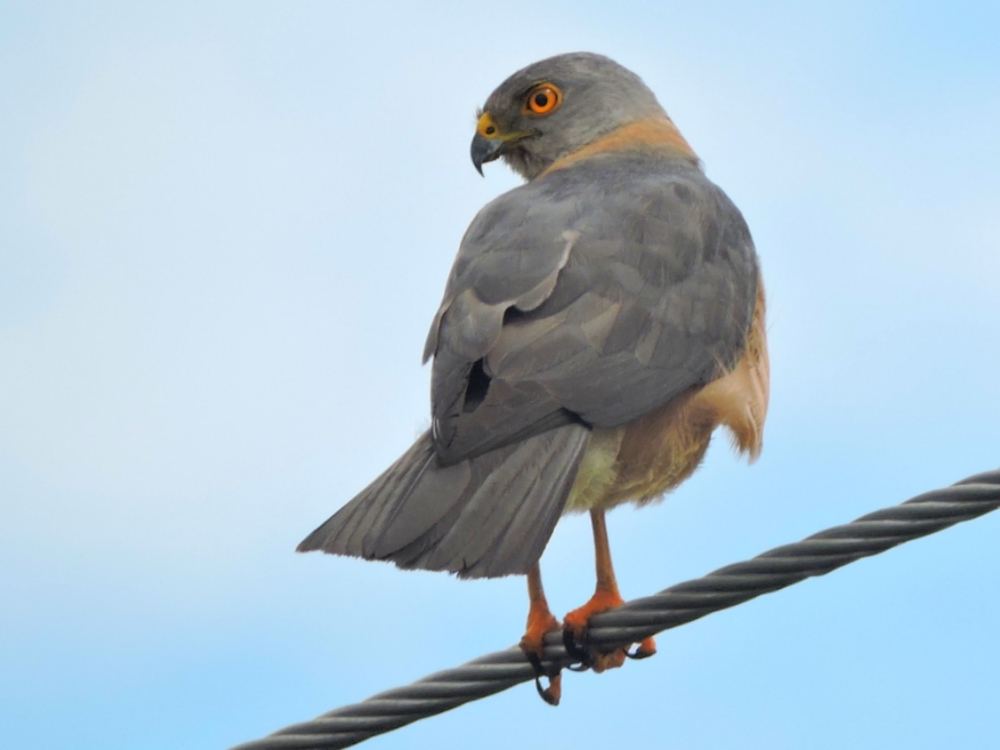
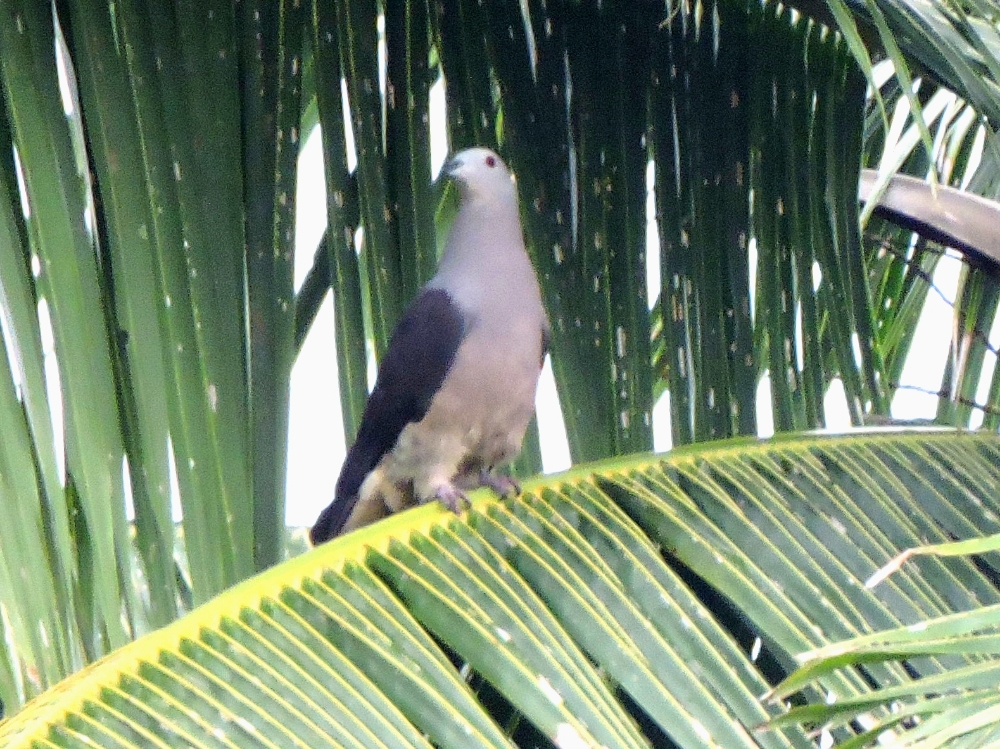
The smaller birds seen in, and near, the forests included, Streaked Fantail, Azure-Crested Flycatcher, Layard’s White-Eye, the closely related Silvereye…
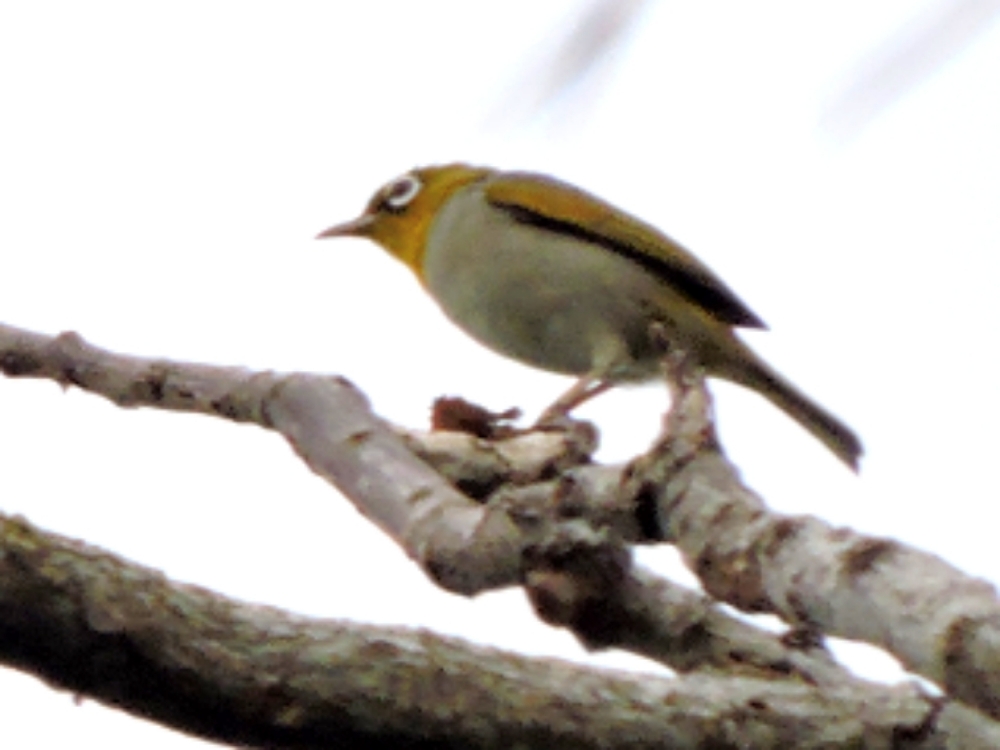
…Slaty Monarch…
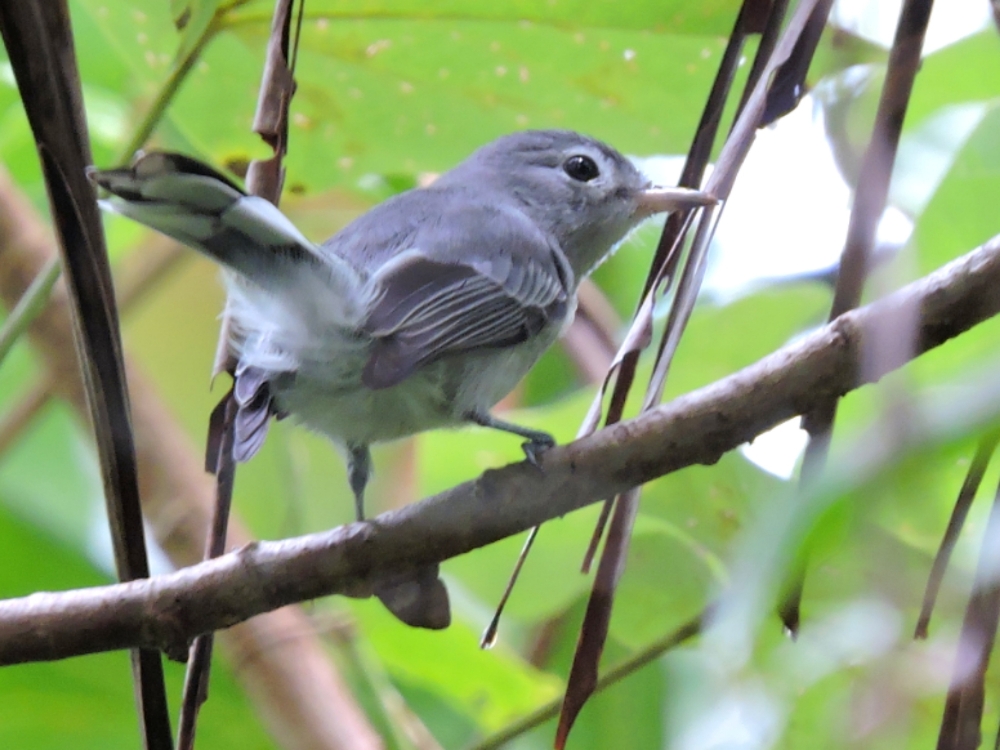
…Vanikoro Flycatcher…
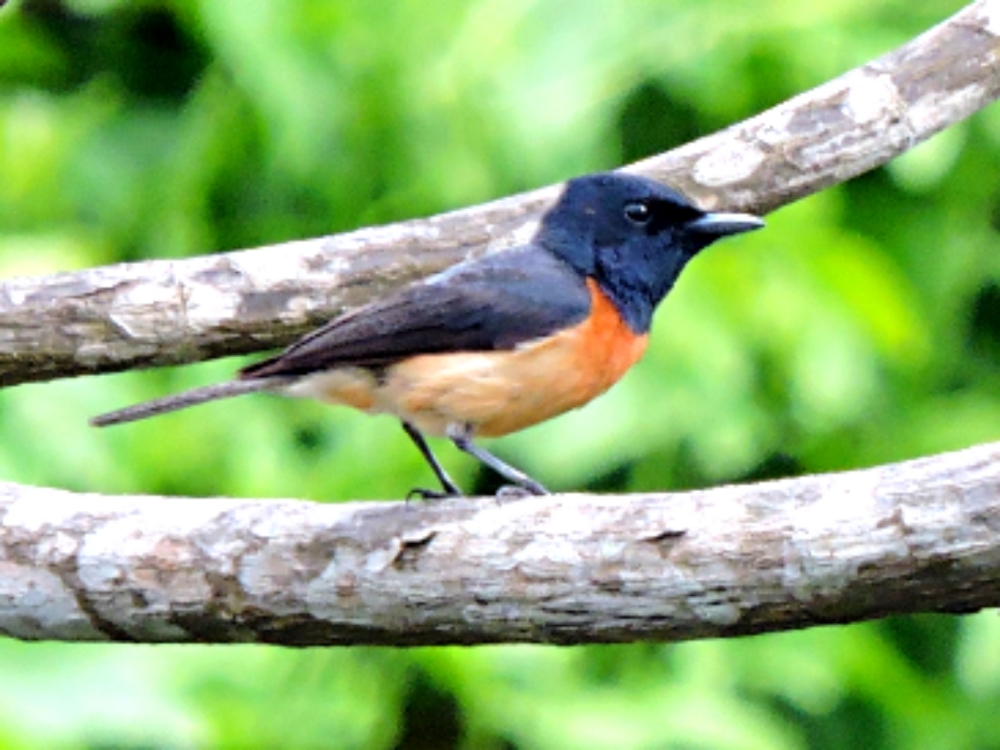
…Fiji Shrikebill…
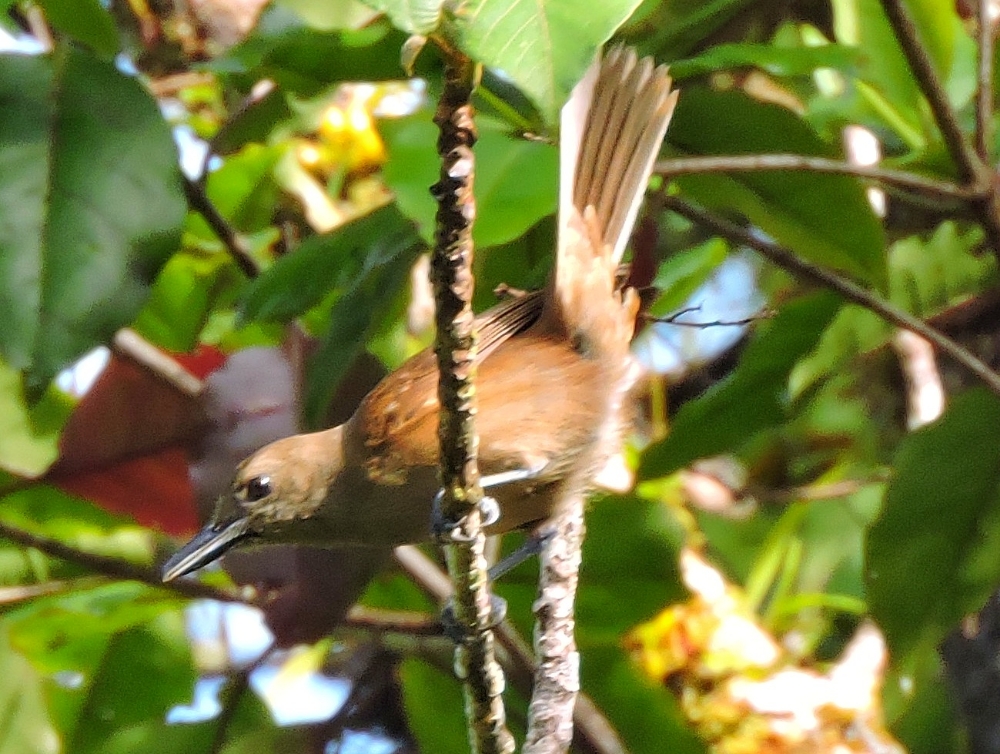
…and Orange-Breasted Myzomela.
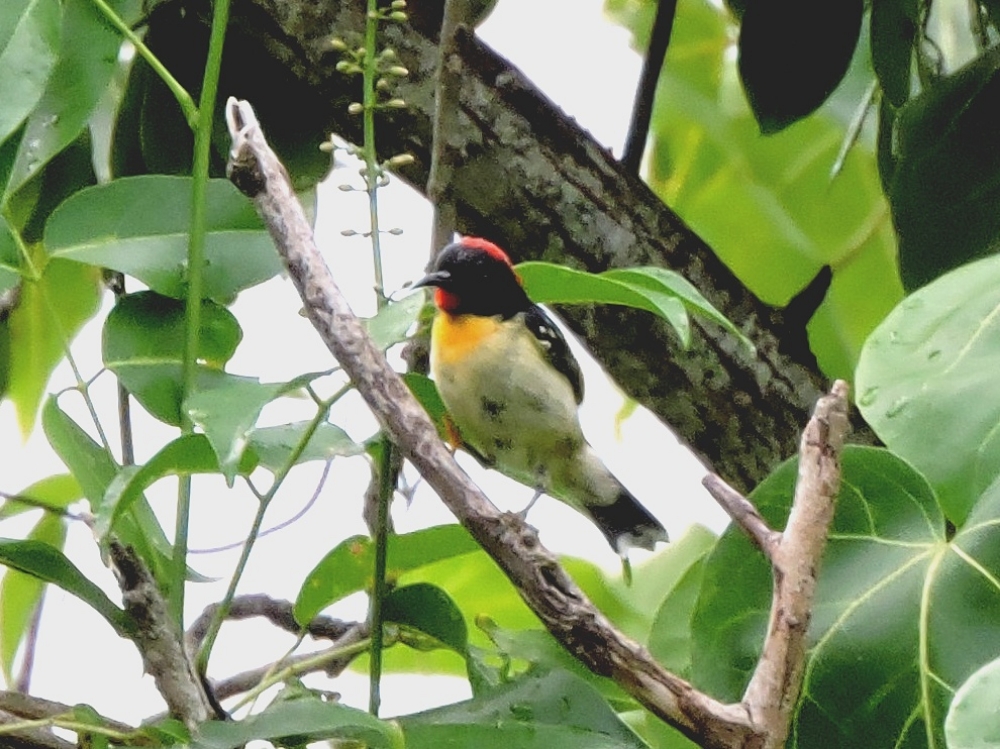
In addition to that small, attractive Honeyeater, there are a handful of larger members of that family that have now been split into separate species most easily differentiated by location of their particular island homes. Duetting Giant Honeyeater and Western Wattled-Honeyeater on Viti Levu…
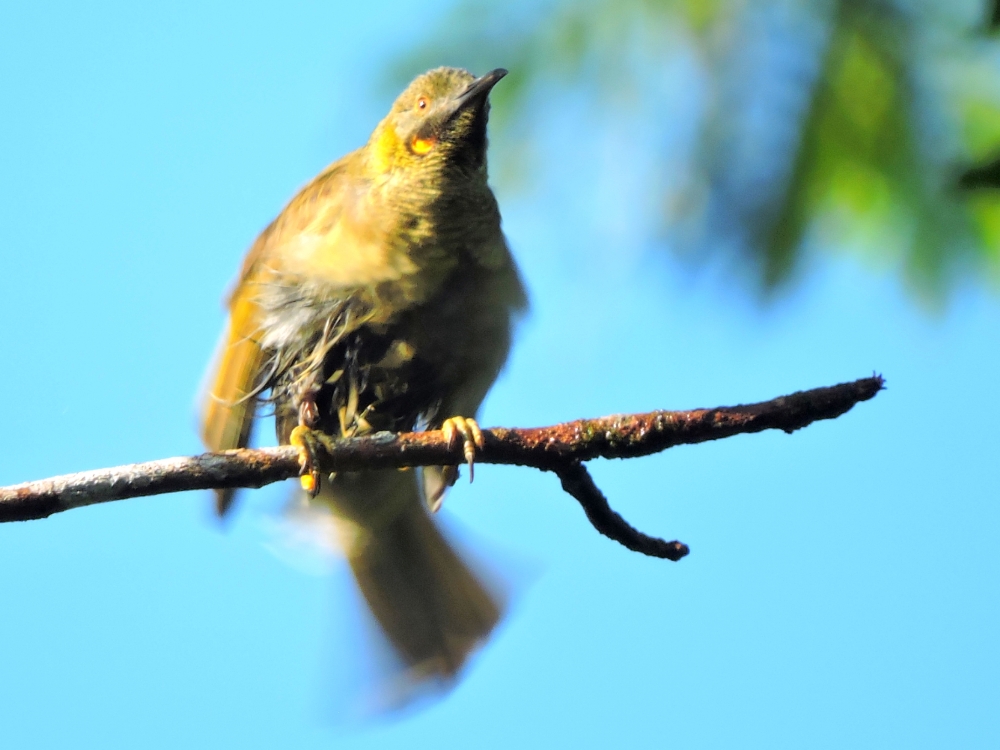
…Northern Wattled-Honeyeater on Taveuni…
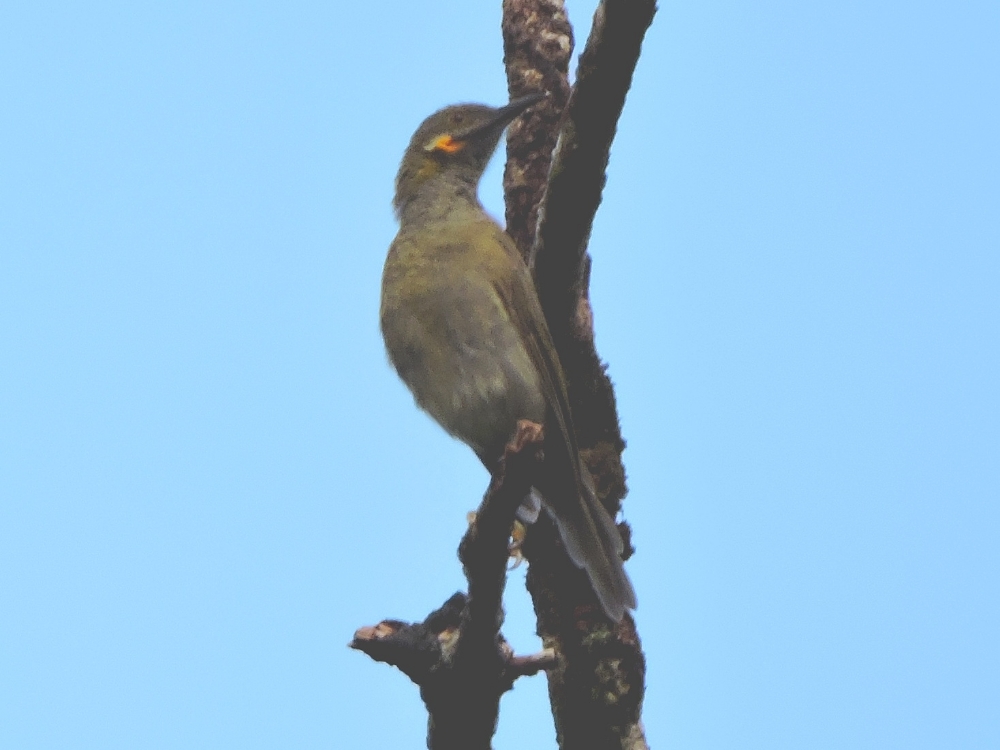
…and Kadavu Honeyeater, appropriately, on Kadavu.
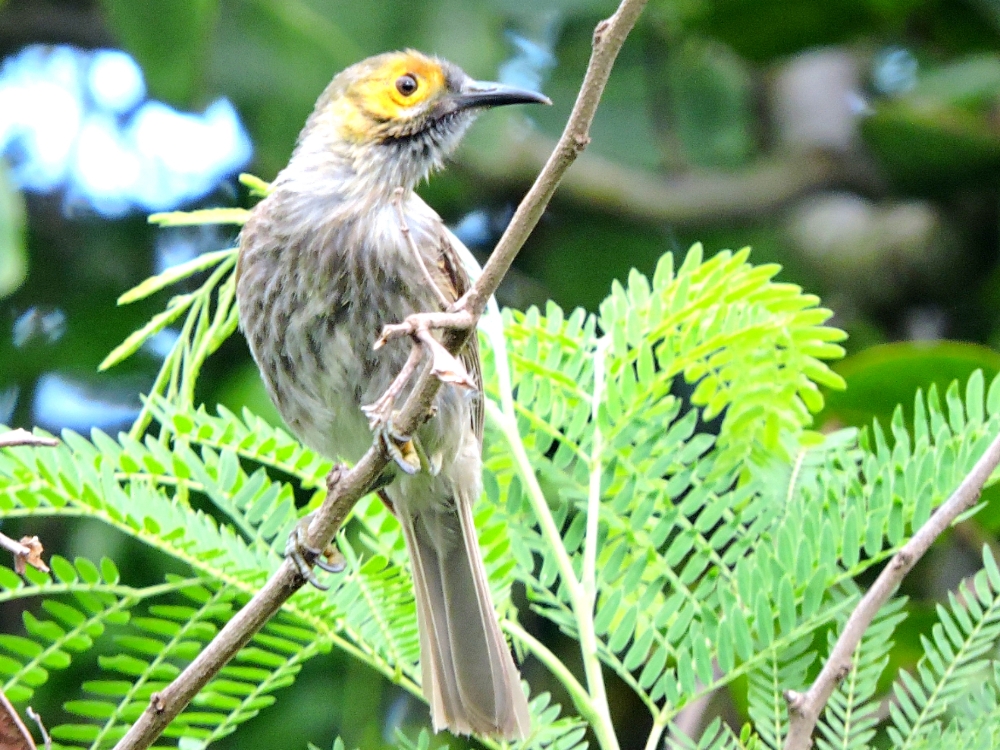
While I happily saw the amazing Orange Dove on Taveuni, there are four other, equally impressive, Dove species in Fiji, two of those restricted to particular islands. On Viti Levu and Kadavu I clearly heard the distinctive vocalizations of their respective examples, but sadly I must refuse to count heard only observations for such beautiful species, and that was the big disappointment of my birding efforts in Fiji.
However, that was nicely compensated for by successful sightings of probably my favorite family. There are four beautiful parrots that are typically seen in Fiji, while two more are either rare or remote. The national bird of Fiji is the well-distributed and accommodating Collared Lory.
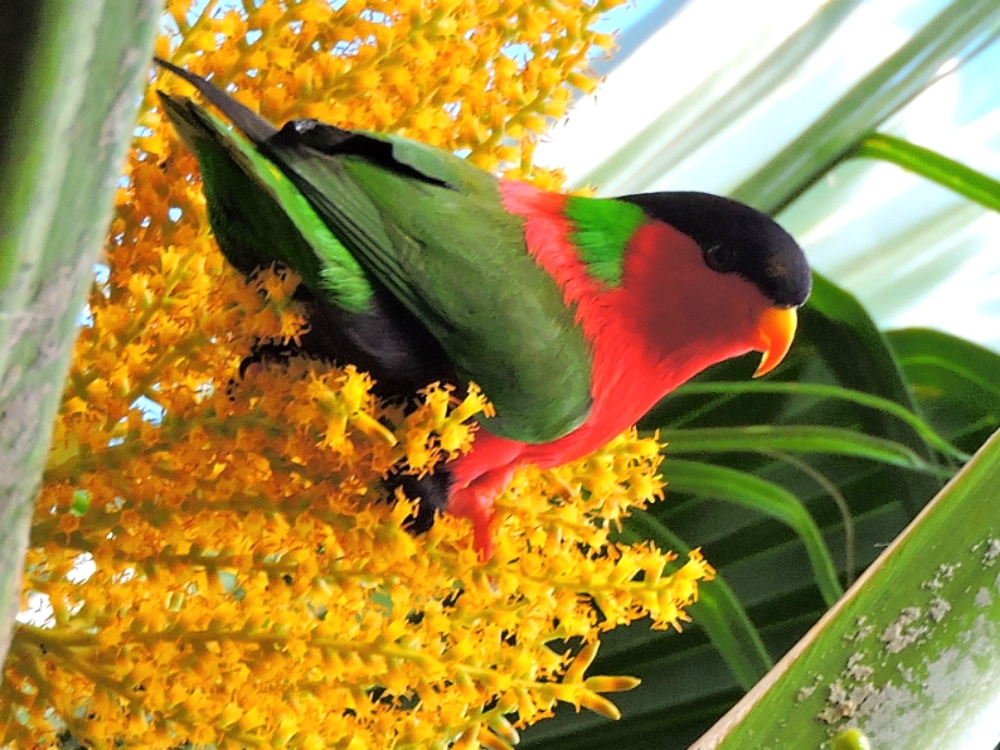
The remaining three are a group known as the Shining-Parrots. These rather large parrots, similar in size and form to one of the smaller Macaws or Cockatoos, take their name from their impressive plumage, which may look nearly black in poor light, but appears almost fluorescent in bright sunlight. While these birds are relatively easy to encounter, they are not especially easy to see well, so I was generally satisfied with the views I was able to obtain. The three species are each restricted to a particular island, or closely neighboring islands, and the first I saw was Masked Shining-Parrot on Viti Levu.
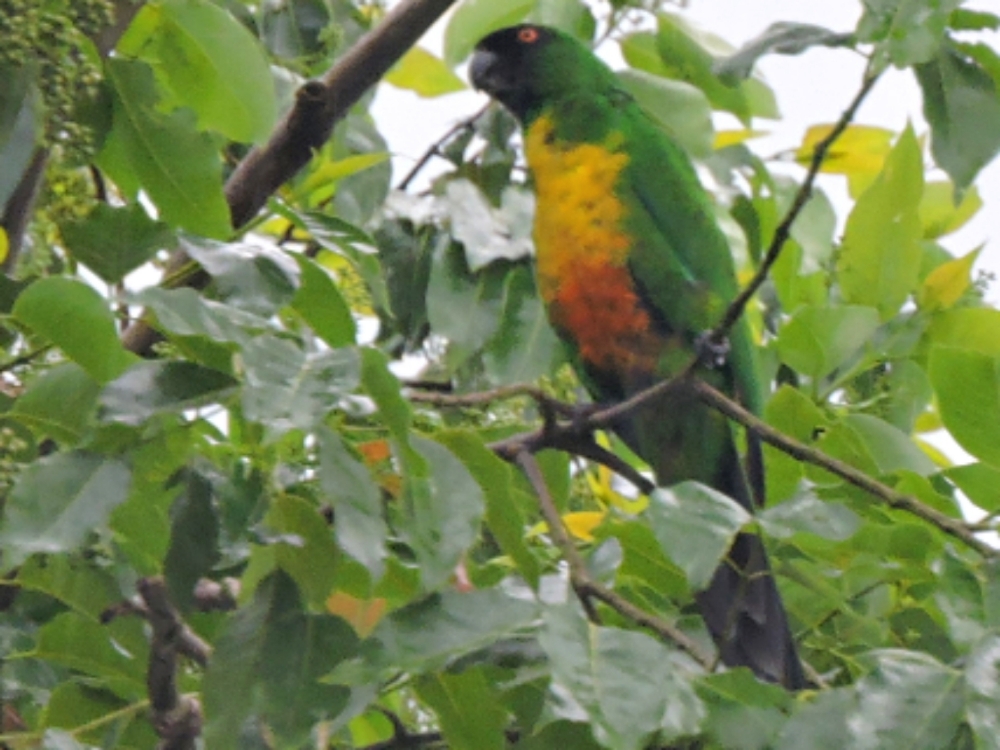
Next, on Taveuni, Maroon Shining-Parrot became Tour Bird number nine hundred ninety-nine. One can see why I would have been satisfied had it been the big One Thousand.
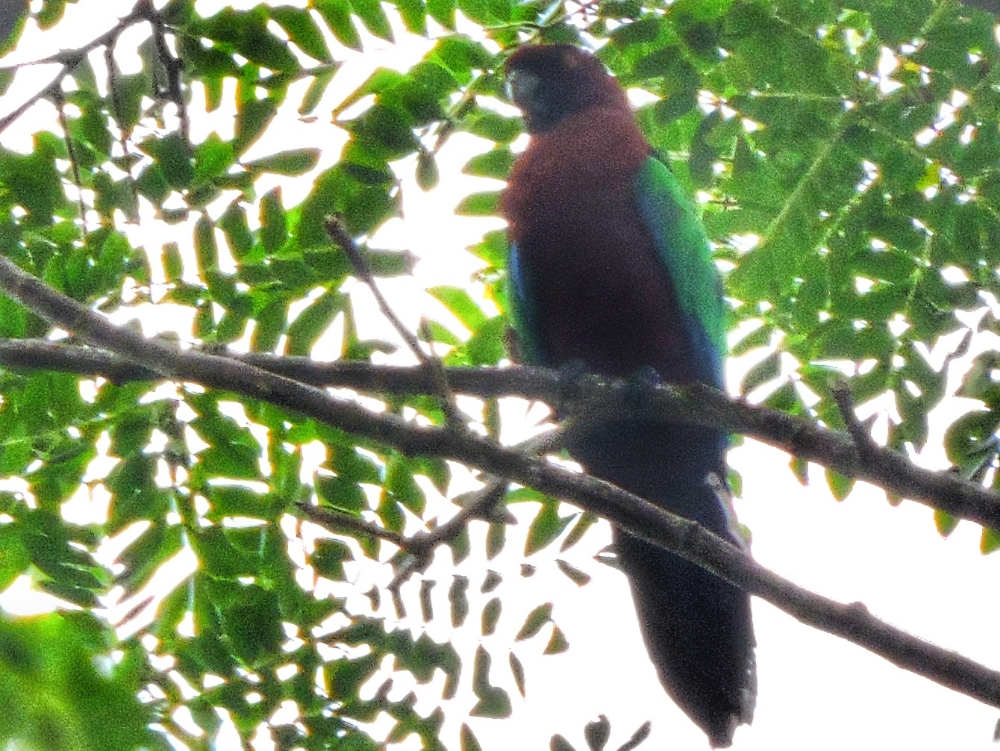
And finally, on my last real birding day in Fiji, Crimson Shining-Parrot on Kadavu.
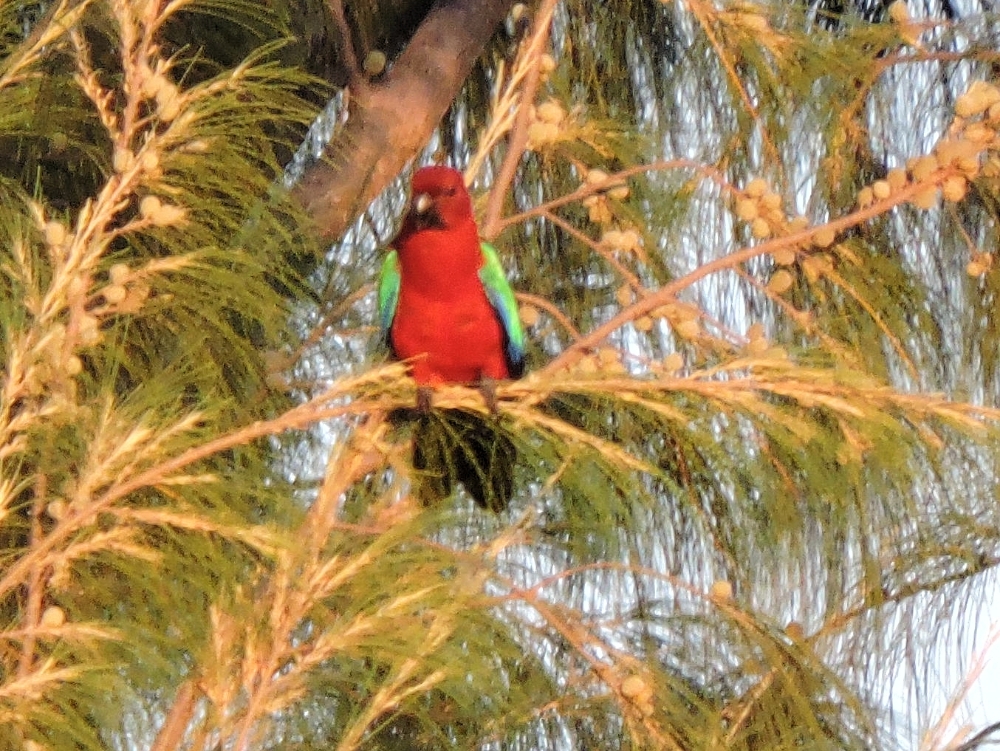
Clearly I couldn’t have asked for a better location to achieve my One Thousand bird goal for the Tour, and that success was all the more satisfying because the other birds I saw in Fiji were equally distinctive and impressive. I could stop looking for new species from this point forward, but what would be the point of that? There are a few places probably left to come during the remaining days of the World2 Tour and there must be some interesting birds there, too, so why not try to see what else is out there.